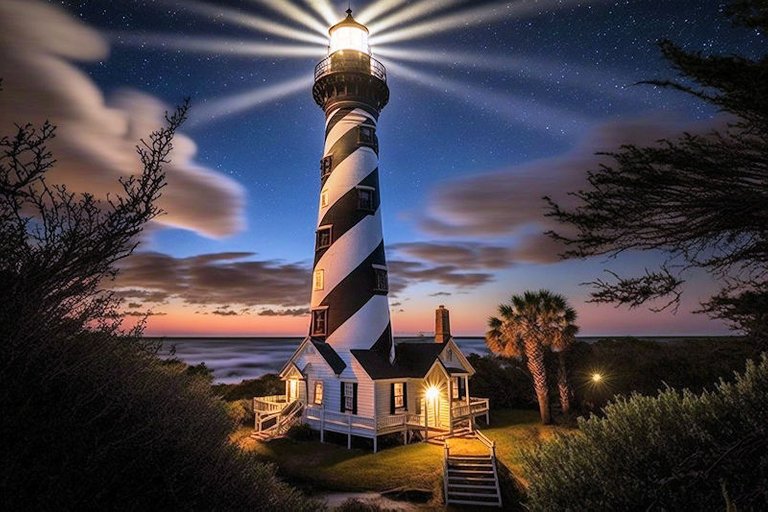
Thousands of lighthouses are found around the world. For centuries they have aided those sailing the waterways in avoiding dangerous shorelines and to guide them into safe harbour. They are not only a physical guidepost, they are an endearing symbol of the importance of guidance and direction in our lives, physical and spiritual.
The first lighthouse, the Pharos of Alexandria, was built in ancient Egypt around 280BC by Ptolemy I and his son Ptolemy II. It stood 400 feet high on the island of Pharos in the harbour of Alexandria. It was considered to be one of the Seven Wonders of the Ancient World.
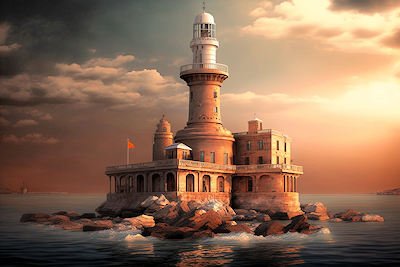
Through the following ages it was gradually destroyed by invaders and earthquakes before being completely destroyed in the 1300s. The Pharos Lighthouse remains a symbol of the ancient world's engineering and architectural achievements, and its legacy continues to inspire architects and engineers to this day.
From there the practice of buiding lighthouses spread around the world warning ships and boats of rocks, shoals and underwater obstructions. They are usually built in the style of a tower to provide the height needed for mariners to see them from a great distance.
The styles do vary around the world depending on local materials, traditions and even culture. The light they emit helps mariners determine their location, set their course and to navigate safely.
Where Lighthouses Are Built
Lighthouses are typically built where there is a need for navigational assistance. They may be found:
- at the entrance to a harbour
- mouth of a river
- rocky coastline
- isolated island
- areas of heavy maritime traffic
- along rivers where hazards occur
- on inland lakes
- on inland canals
Factors that lead to a lighthouse being constructed include the surround geography, local weather conditions and the needs of those who will end up using it. Some lighthouses end up in heavily trafficked areas while others will be found in remote, often dangerous, locations. Inland lighthouses are typically smaller in size than those found on ocean coastlines.
Lighthouses Are Often Popular Tourist Destinations
Some lighthouses throughout the world have become cultural and architectural landmarks prompting them to be preserved as historic sites and tourist attractions. Some lighthouses have become very well known. Some of the factors contributing to their recognition include:
- Historical Significance — they may have been the first in the region, longterm continuous operation or played a role in significant events
Boston Light, United States — built in 1716 on Little Brewster Island in Boston Harbor, is the oldest lighthouse in the US — has played a significant role in maritime history.
Hook Lighthouse, Ireland — located in County Wexford is one of the oldest operational lighthouses in the world and has a rich history dating back to the 13th century. It’s exact year of construction is not known, some believe it may date back as far as 1172.
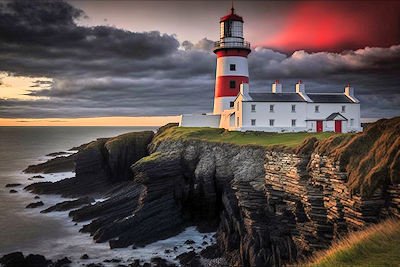
Peggy's Point Lighthouse, Canada — built in 1915 in Peggy's Cove, Nova Scotia, is one of Canada's most iconic and photographed lighthouses and is a symbol of the country's maritime heritage.
Eddystone Lighthouse, England — first built in 1699 on a rocky island in the English Channel, is considered one of the world's most important lighthouse structures and has played a key role in maritime safety for hundreds of years.
St. Augustine Lighthouse, United States — built in 1874 in St. Augustine, Florida, is one of the oldest lighthouses in the United States and has played a significant role in the country's maritime and military history.* (Image in post header)*
- **Location & Accessibility **— those in popular tourist areas and more easily accessible to the public
Cape Byron Lighthouse, Australia — built in 1901 in Byron Bay, New South Wales, is one of the most easterly lighthouses in Australia and is surrounded by stunning coastal scenery.
St. Simons Lighthouse, United States — built in 1872 on St. Simons Island, Georgia, is one of the most accessible lighthouses in the United States and is located in a state park with several nearby beaches and parks.
Portland Head Light, United States — built in 1791 in Cape Elizabeth, Maine, is one of the most visited lighthouses in the United States and is surrounded by beautiful parkland and scenic coastline.
Tromsø Arctic Lighthouse, Norway — built in 1844 in Tromsø, Norway, is one of the most northernly lighthouses in the world and is surrounded by stunning Arctic scenery and wildlife.
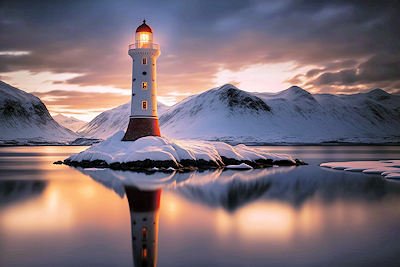
Lighthouse of Genoa, Italy — built in 1543 in Genoa, Italy, is one of the most accessible lighthouses in Italy and is surrounded by beautiful coastal scenery, historical landmarks, and local markets.
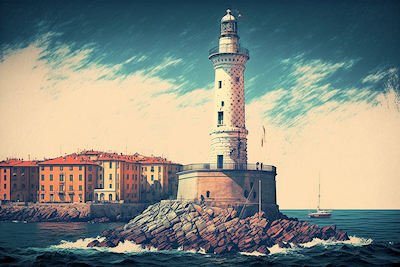
- Architecture & Design— Unique or unusual architectural styles
Baily Lighthouse, Ireland — built in 1814 in Howth, Dublin, Ireland, is known for its unique design, which features a circular tower and an octagonal lantern.
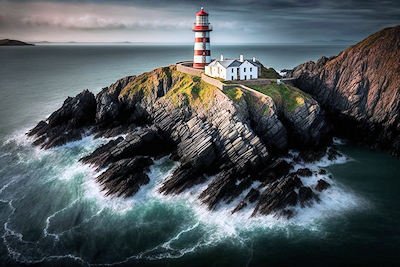
La Jument Lighthouse, France — built in 1911 in Brittany, France, is known for its innovative design, which was specifically built to withstand the rough seas and strong winds in the area.
St. Mary's Lighthouse, England — built in 1832 on the coast of Tyne and Wear, England, is known for its striking design, which features a white tower and a black and white spiral staircase.
- Iconic Status — Symbolic of their region, city or country
Statue of Liberty, United States — dedicated in 1886 in New York Harbor, is one of the most iconic landmarks in the United States and is known for its symbolism of freedom and democracy.
Faro de Chipiona, Spain — built in 1867 in Chipiona, Spain, is one of the most iconic lighthouses in Spain and is known for its distinctive design, which features a white tower and a red dome.
Cloch Lighthouse, Scotland — built in 1797 in the Firth of Clyde, Scotland, is one of the most iconic lighthouses in Scotland and is known for its red and white striped tower and its location on a rocky outcropping in the sea.
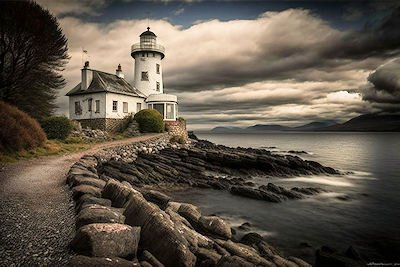
Sydney Harbour Lighthouse, Australia— built in 1816 in Sydney, Australia, is one of the most iconic landmarks in Australia and is known for its location on the Sydney Opera House and its stunning views of Sydney Harbour and the city skyline.
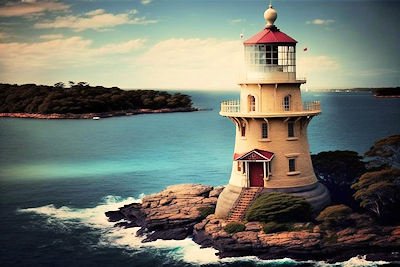
Lighthouses Are Often Extremely Remote
While some lighthouses have become popular tourist destinations, they were not built for popularity. They had a job to do and often in remote, difficult to reach locations. Some of those lighthouses include:
Bishop Rock Lighthouse, England — built in 1858 on the westernmost point of the Isles of Scilly, this lighthouse is one of the most remote in England and is known for its location on a tiny rock in the middle of the ocean.
Les Hanois Lighthouse, Guernsey — built in 1847 on a rocky outcropping in the middle of the English Channel, making it one of the most remote lighthouses in Europe.
Cape Horn Lighthouse, Chile — built in 1881 at the southern tip of South America and is one of the most remote lighthouses in the world. It is known for its location on a rocky cliff overlooking the treacherous waters of the Drake Passage.
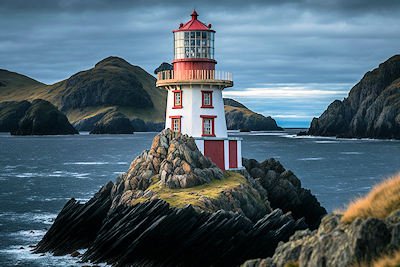
Sable Island Lighthouse, Canada — built in 1872 on a small island off the coast of Nova Scotia and is one of the most remote lighthouses in Canada. It is known for its location on a shifting sand dune island and its challenging conditions for the keepers.
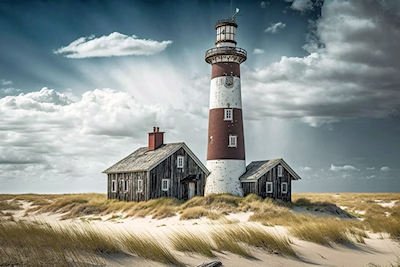
St. Paul's Rocks Lighthouse, Brazil — built in 1906 on a remote archipelago in the Atlantic Ocean and is one of the most remote lighthouses in the world. It is known for its location on a rocky outcropping in the middle of the ocean and its challenging conditions for the keepers.
The most northerly lighthouse in the world is the Nordkapp Lighthouse, Magerøya, Norway. It is located on the island of Magerøya, which is the northernmost point in Europe. The lighthouse was built in 1909 and has been guiding ships through the treacherous waters of the Arctic Ocean ever since. Even with it’s remote location, it is still a popular destination for those interested in history, and the rugged beauty of the Arctic.
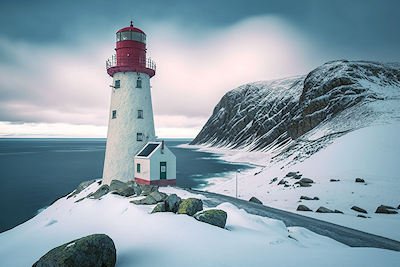
The most southerly lighthouse in the world is Ushuaia Lighthouse, Tierra del Fuego, Argentina. Found on the southern tip of South America, on the Beagle Channel it’s an important aid to navigation for ships traveling through the channel, which is known for strong winds, heavy seas, and unpredictable weather. It’s also a popular destination for those interested in history and unique place at the end of the world.
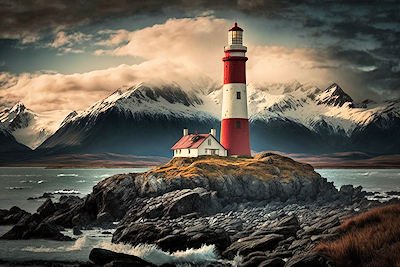
The Role of the Lighthouse Keeper
The vast majority of lighthouses these days are no longer manned. They operate remotely using electronic equipment. About 15% of lighthouses in the world are estimated to still be manned.
The typical role of the lighthouse keeper in the past was to maintain the lighthouse and make sure it worked properly. The lamps would need to be lit, the lenses kept clean and functioning. They typically were expected to maintain the records of shipping traffic in and out of the harbour or reporting incidents to authorities.
In the past they would typically live on-site with their families. The isolation of many lighthouses would require the keepers spending weeks or months on duty. It was not a job or the faint of heart or their families.
The Endearing Attraction of Lighthouses
The often solitary role of lighthouses in guiding and protecting travellers has created an endearing attraction for many people. They resonated with the role they have played in the past and continue to even in a changing and evolving world.
When I first started publishing low content books three years ago, my first designs were images of a lighthouse with relevant quotes on the cover of lined journals.
They are still my best selling books. I’ll be publishing some more in that series at some point this year using AI to generate the images as I have done for this post.
Shadowspub writes on a variety of subjects as she pursues her passion for learning. She also writes on other platforms and enjoys creating books you use like journals, notebooks, coloring books etc.
NOTE: unless otherwise stated, all images are the author’s

How to Connect With ShadowsPub:
Twitter: @shadowspub
Instagram: shadowspublishing
Medium: @shadowspublishing
Publishing Website: Shadows Publishing
Nicheless Website: Nicheless & Loving It
(podcast, subscriptions for: Prompt A Day, PYPT Reminder & Newsletter)
Pimp Your Post Thursday (PYPT): join us on the DreemPort Discord12pm EST Thursdays
—————————————-
Get eyes on your content and meet new friends. Join DreemPort.

Congratulations @shadowspub! You have completed the following achievement on the Hive blockchain And have been rewarded with New badge(s)
You can view your badges on your board and compare yourself to others in the Ranking
If you no longer want to receive notifications, reply to this comment with the word
STOPCheck out our last posts:
What a great post!
Did you know Plymouth has a relocated lighthouse? Smeaton’s Tower sat on the Eddystone Reef until replaced.
This Lighthouse, Highland Light, also known as Cape Cod Light, about a half mile or so away, was moved, a couple dozen years ago. it was wrapped in steel cables, raised onto train tracks and moved hundreds of yards from it's cliffside residence, to make way for erosion. Walk out past it, and you can see part of the old foundation... part, as, the other part is no fallen, into the "GraveYard Of The Atlantic" along with many wrecks from the early 1700's on:
I grow up hearing the fog horn, many an afternoon and evening, alerting nearby sailors, of the danger of our shoals. Shame, so many sailors fell for the song of the naughty sirens, plying their trade.
My shot of Boston Light, mentioned above. I snapped this from a Boat!
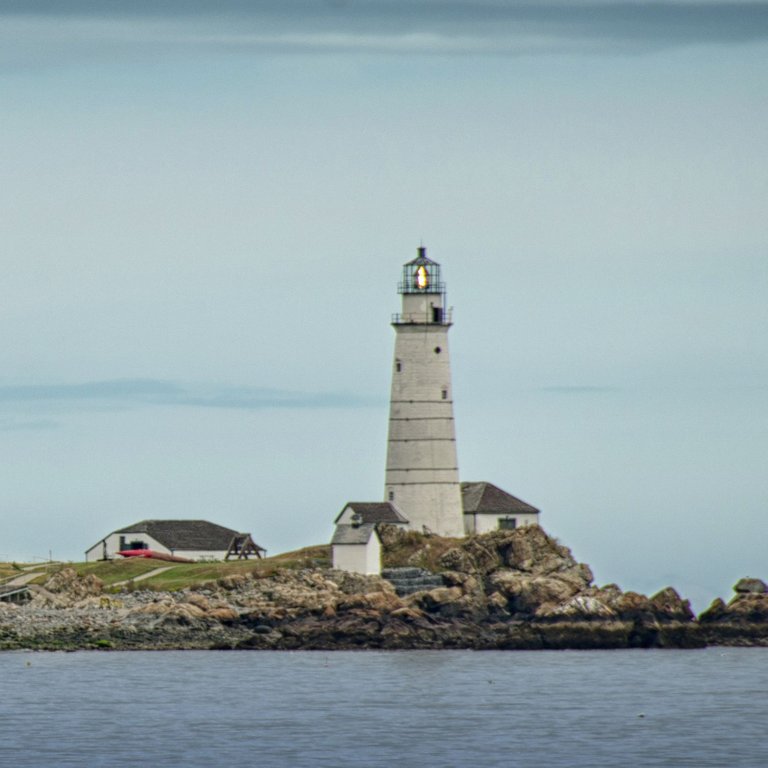
A FEW YEARS AGO, THIS ONE: MINOTS LEDGE LIGHT, was sold. Privately owned now. Built and only accessible by Boat.